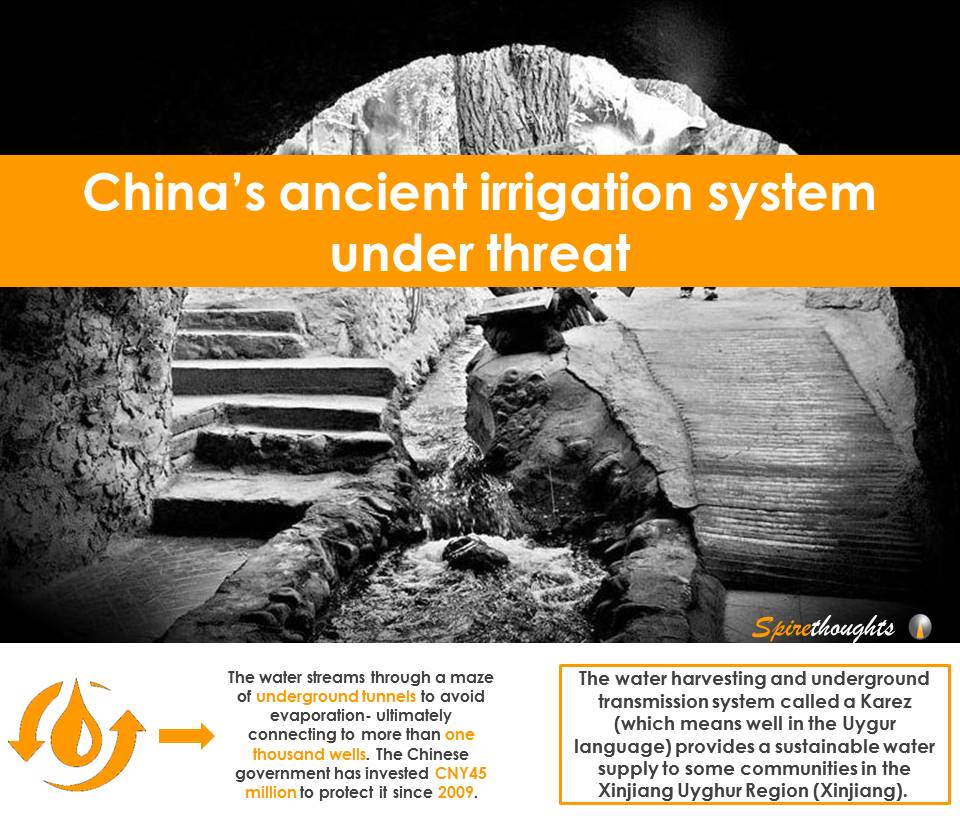One of China’s most recognized ancient oases – the Karez – is a construction marvel built by the Uyghur people. The water harvesting and underground transmission system called a Karez (which means well in the Uygur language) provides a sustainable water supply to some communities in the Xinjiang Uyghur Region (Xinjiang) as well as in some countries like Iraq, Iran and Kurdistan.
The irrigation method carries glacial groundwater to the Turpan Basin from the eastern side of Tianshan Mountains. The water streams through a maze of underground tunnels to avoid evaporation. The water ultimately connects to more than one thousand wells.
Although Turpan is the world’s largest producer of raisins due to the Karez, challenges remain. Silt accumulation and high demand for water from nearby factories threaten the water supply.
Furthermore, with the site’s potential to become a UNESCO World Heritage site, the Chinese government has invested CNY45 million to protect it since 2009.
Will China’s ancient Uyghur irrigation system be able to survive and thrive?

Comments
Post a Comment